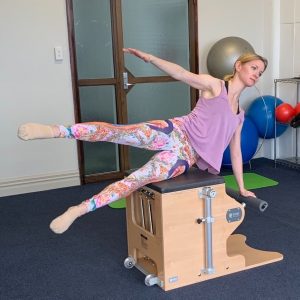Pilates
noun | piˈla’tes | \ piˈlätēz \
What is Pilates?
A mind-body exercise that provides daily conditioning, promotes whole-body health and develops mental awareness to optimize your personal performance.
Origin,1960s: named after German physical fitness specialist
Joseph Pilates (1880-1967), who devised the system.
Benefits of pilates:
Pilates balances the muscles of the body so that they are neither loose and weak nor tight and rigid. Muscles that are too loose and weak or too tight and rigid can make the body more susceptible to injury.
Pilates focuses on developing dynamic strength, which means you are better able to support and stabilize your joints while moving. Research has suggested that Pilates is an effective method for reducing injury risk in sports.
Find more on Wikipedia page
History
Pilates was developed by Joseph Pilates, from Mönchengladbach, Germany. His father was a gymnast and his mother a naturopath.
During the first half of the twentieth century, he developed a system of exercises which were intended to strengthen the human mind and body. Pilates believed that mental and physical health were interrelated
In his youth he had practiced many of the physical training regimens available in Germany, and it was from these he developed his own method. It has clear connections with the physical culture of the late nineteenth century, such as the use of special apparatuses and claims that the exercises could cure ill health. It is also related to the tradition of “corrective exercise” or “medical gymnastics” as typified by Pehr Henrik Ling.
Pilates said that the inspiration for his method came to him during World War One, while he was being held at the Knockaloe internment camp on the Isle of Man. He developed his method there for four years, working on his fellow internees.
Joseph Pilates accompanied his method with a variety of equipment, for which he used the term “apparatus”. Each apparatus was designed to help accelerate the process of stretching, strengthening, body alignment and increased core strength started by the mat work. The best-known and most popular apparatus today, the Reformer, was originally called the Universal Reformer, aptly named for “universally reforming the body”. Eventually Pilates designed other apparatus, including the Cadillac, Wunda Chair, High “Electric” Chair, Spine Corrector, Ladder Barrel and Pedi-Pole.
Pilates published two books related to his training method: Your Health: A Corrective System of Exercising That Revolutionizes the Entire Field of Physical Education in 1934, and Return to Life Through Contrology in 1945.
His first students went on to teach his methods, including: Romana Kryzanowska, Kathy Grant, Jay Grimes, Ron Fletcher, Mary Bowen, Carola Treir, Bob Seed, Eve Gentry, Bruce King, Lolita San Miguel, and Mary Pilates, Joseph’s niece. Contemporary Pilates includes both the “Modern” Pilates and the “Classical/Traditional” Pilates. Modern Pilates is partly derived from the teaching of some first generation students, while Classical Pilates aims to preserve the original work as Joseph Pilates taught it.
